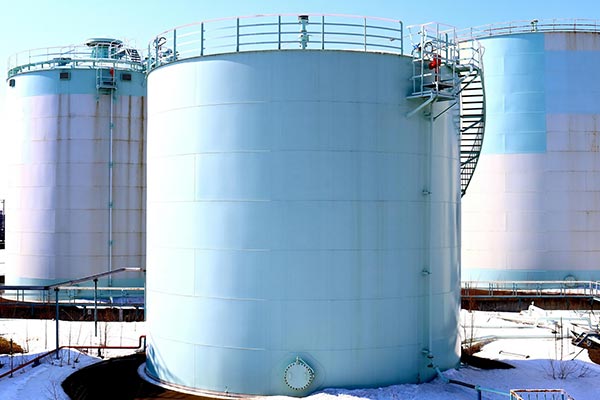
What does performance testing for the 500 series include?
Knife test: We verify adhesion by measuring the coating system’s resistance to a cutting force using a tried-and-true field test.
Reverse impact test: We measure the lining’s ability to maintain integrity and adhesion if the exterior of the tank gets dented. The uncoated side of the test panel gets hammered, and we check the coated side for cracking or any other loss of adhesion greater than 15 mm in diameter.
Fuel and water resistance: We immerse test panels for 21 days in glass jars containing a mix of JP-8 fuel and distilled water, and then check for blisters, darkening, or any indication of loss of adhesion (like softening).
Color: The difference in color between the primer and the topcoat helps the inspector verify the coating’s coverage, which is far more crucial with linings for immersion service than paints for atmospheric service. In the 500 Series, the 500 primer is generally yellow while the 501 topcoat is generally an off-white. A required delta E of 10 or more between the two coatings means that the contrast should be easily visible to the naked eye for in-the-field application; any sections not visually distinct like this can indicate a thinness of the topcoat or otherwise incomplete coverage.
Immersion Testing: Coated panels are submerged in various fuel/water mixtures at an elevated temperature for 180 days to simulate extreme usage condition. The panels are evaluated at 90 and 180 days for visual defects including discoloration, cracking, and blistering.
Freeze-Thaw Stability: Coated panels are exposed to a 30-day cycle of freeze/thaw that includes 16 hours at a frigid -30°C followed by 4 hours at a blistering 50°C. After 30 days, the panels are evaluated for adhesion and softening.
Accelerated Weathering: Coated panels are tested for 5000 hours according to ASTM D5894, varying between a UV/condensation chamber and a salt fog/dry chamber. Panels are evaluated for rusting and blistering every 1000 hours up to 4000 hours without scraping, and with scraping at the final 5000 hour mark to evaluate undercutting. Pictures are taken at each testing point.